Evaluation
The Prototype Fund has been continuously evaluated since its inception in 2016. The focus of the evaluation is on the question of how funding programs can be designed to be accessible, inclusive, and oriented towards the common good.
Data basis and data collection methods of the evaluation
The information below is based on funding data collected by the Prototype Fund as part of the application and funding process. They are usually complete. In addition, the Prototype Fund's accompanying research has regularly collected supplementary data since 2016, the Technopolis GmbH collected additional data once in 2023. They conducted online surveys and interviews with samples of applicants and grantees before, during and after the funding period.
Last revision: 26.05.2025
Who applies to the Prototype Fund?
01
How many applications does the Prototype Fund receive?
Reveal
Hide
An average of 264 teams or individuals applied to the Prototype Fund with a project per round or year. Apart from round 1, for which there was a particularly large number of applications, competition was slightly higher in the application rounds with funding starting in September than those with funding starting in March. With an average of 22 funded projects per round, 9.3% of applications received funding by the Prototype Fund.
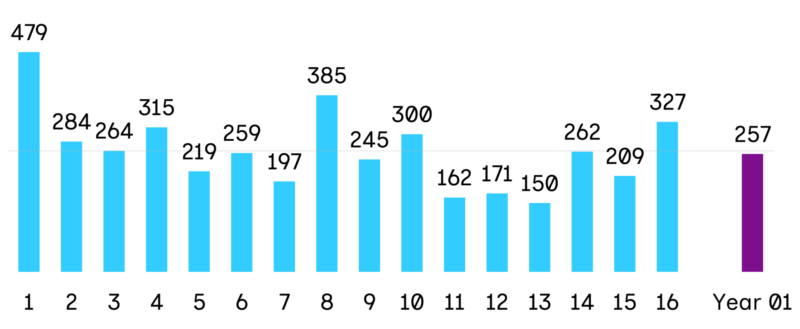
02
Do more teams or individuals apply?
Reveal
Hide
On average, slightly more teams than individuals have applied in previous application phases.

Data: Open Knowledge Foundation, based on funding data for rounds 2-16, N=3.749.

Data: Open Knowledge Foundation, based on funding data for year 01, N=257.
Which projects are submitted to the Prototype Fund?
01
Which funding priority received the most applications by 2024?
Reveal
Hide
Until its relaunch in 2024, the Prototype Fund funded not only projects with a focus on Software Infrastructure and Data Security but also Civic Tech and Data Literacy. In rounds 1-16, more than half of the applicants assigned their project idea to the funding priority Civic Tech. About one in four applications was understood by the applicants as Software Infrastructure. Data Literacy and Data Security were significantly less represented in the applications, each accounting for around 10% of applications. As the four funding priorities cannot be clearly distinguished from one another, these self-assignments primarily provide insights into the applicants' main objectives.
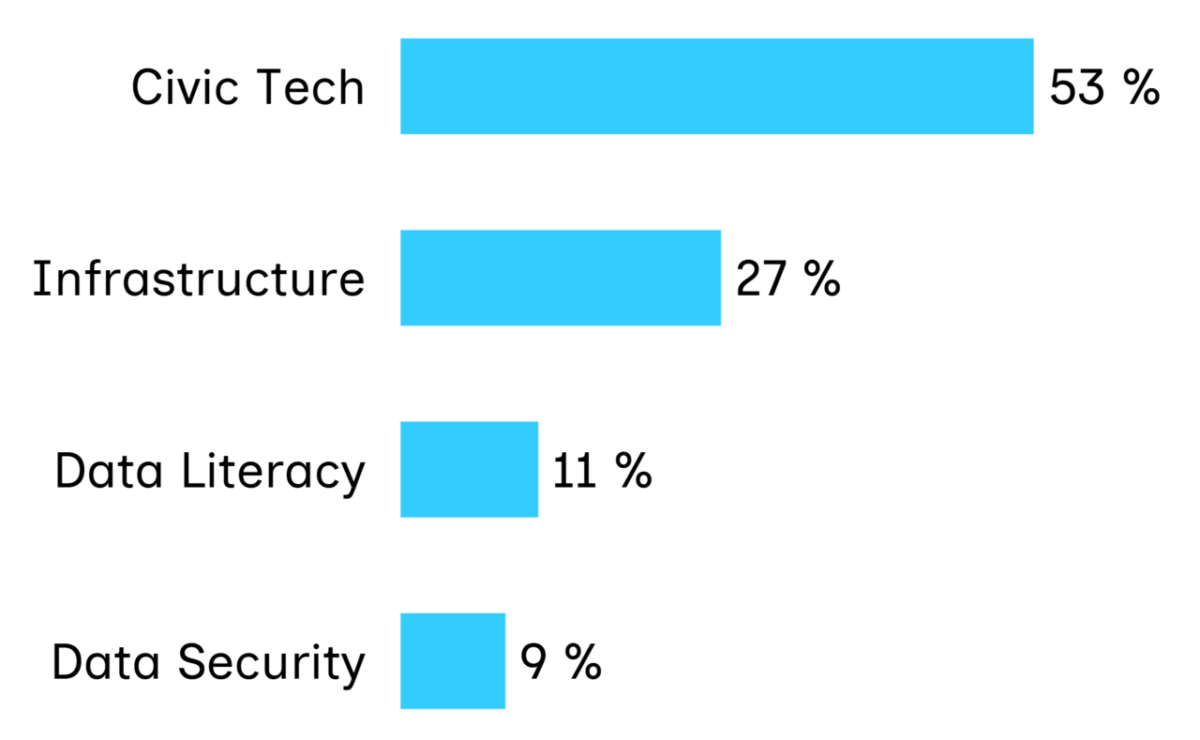
Data: Open Knowledge Foundation, based on the self-assignment of the grant recipients from rounds 1-16 at the time of application, N=4.228.
02
Would the projects have been developed without the Prototype Fund?
Reveal
Hide
Many of the funded projects would probably not have been developed without the Prototype Fund. In a survey of grantees from rounds 1-12, 55% stated that they would not have realised their project idea without funding. A corresponding proportion of 60% did not pursue projects that had previously been rejected by the Prototype Fund. 16% stated that they would have developed their project from their own resources without the Prototype Fund, but on a different, usually much smaller scale and over a longer period of time. The same proportion stated that they had developed their project in that way after it had been rejected by the Prototype Fund.
At the time of applying to the Prototype Fund, most of the applicants for Year 01 planned to continue their project without the funding. For 42% of them, however, other funding was a prerequisite. Around a third planned to pursue their project idea at their own expense. In some cases, other options such as donation funding, start-up grants or a combination of different funding sources were also considered. Only 13% of applicants ruled out pursuing their project without funding from the Prototype Fund.
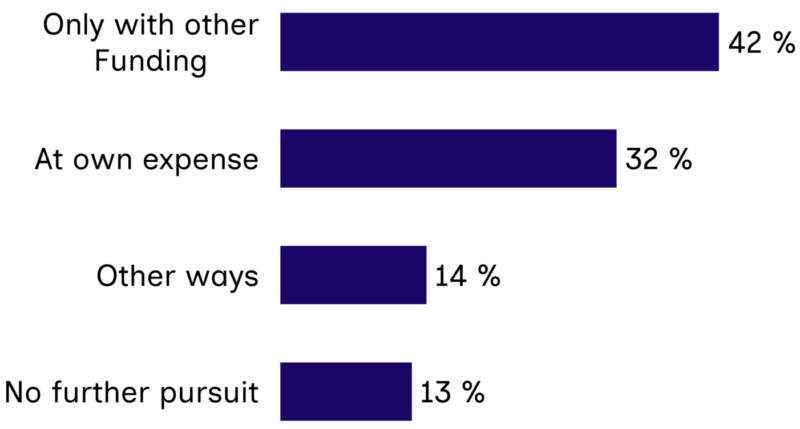
Who are the grantees of the Prototype Fund?
01
Do more teams or individuals receive funding?
Reveal
Hide
In rounds 1-16 more teams than individuals received funding for projects. While 58% of applications were from teams, teams accounted for only 53% of funded projects. In Year 01, on the other hand, the proportion of projects by individuals is at 57% and therefore higher than that of projects by teams. The proportion of applications from teams was 54% and as such slightly higher than that from individuals as in previous years.

Data: Open Knowledge Foundation, based on funding data for rounds 1-16, N=352.

Data: Open Knowledge Foundation, based on funding data for year 01, N=21.
02
Which gender do grantees categorise themselves as?
Reveal
Hide
Surveys with grantees from rounds 1-16 and the WirVsVirus special round show that the majority of those who categorise themselves as one gender identify as male. The proportion is 74%. Female grantees make up 22% and 4% identify with another gender. There is no clear trend in the gender composition of the funding cohorts (Technopolis Evaluation Report 2023, p. 11). The proportion of women among Prototype Fund grantees roughly corresponds to that of computer science students in Germany in the winter semester of 2023/24 (Statistisches Bundesamt 2024). In many large open source projects, however, women often make up far less than 10% of contributors (NGI4ALL.E 2024).
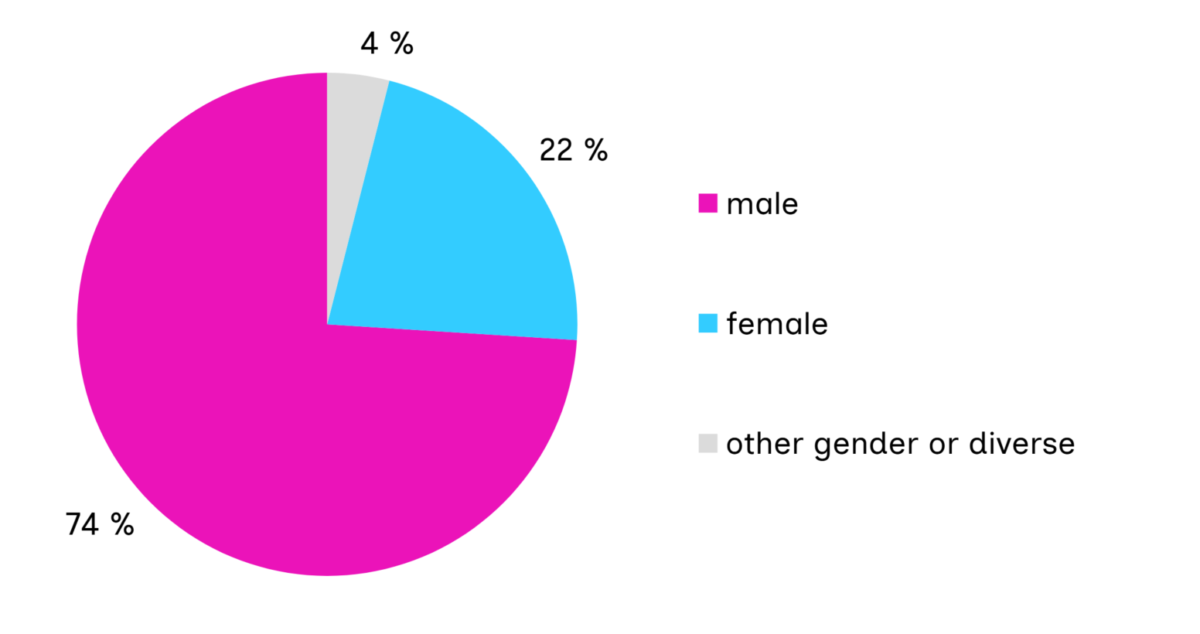
Data: Technopolis Group, based on an online survey among grantees from rounds 1-12 and WirVsVirus, n=156 (see Technopolis-Evauationsbericht, p. 11) / Open Knowledge Foundation, based on an online survey among grantees from rounds 13-16, n=164.
Which projects are supported by the Prototype Fund?
01
How many projects are funded?
Reveal
Hide
The Prototype Fund gave out funding to a total of 373 projects in rounds 1-16 and year 01. An average of 22 projects were supported per funding round.
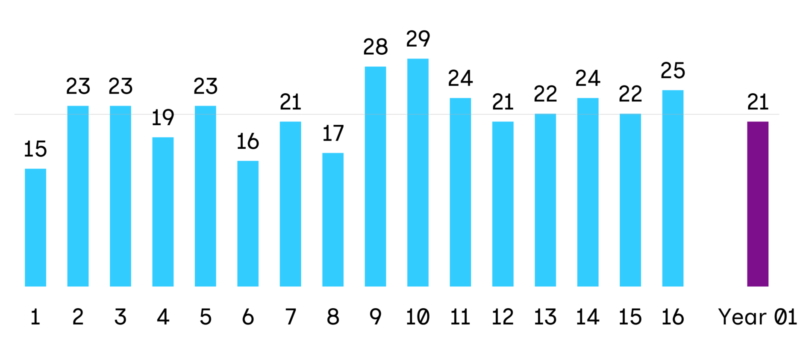
02
Which funding priority received the most funding for projects up to 2024?
Reveal
Hide
Until its relaunch in 2024, the Prototype Fund funded not only projects with a focus on Software Infrastructure and Data Security but also Civic Tech and Data Literacy. In rounds 1-16, the distribution of projects across the Prototype Fund's four funding priorities largely matched that of applications. This means that around half of the funded projects were assigned to Civic Tech at the application stage and around one in four applications was understood as software infrastructure. Data literacy and data security were funded somewhat less frequently. As the four funding pillars cannot be clearly distinguished from one another, the self-assignments shown in the diagram primarily provide information about the main objectives of the funding recipients at the time of their application.
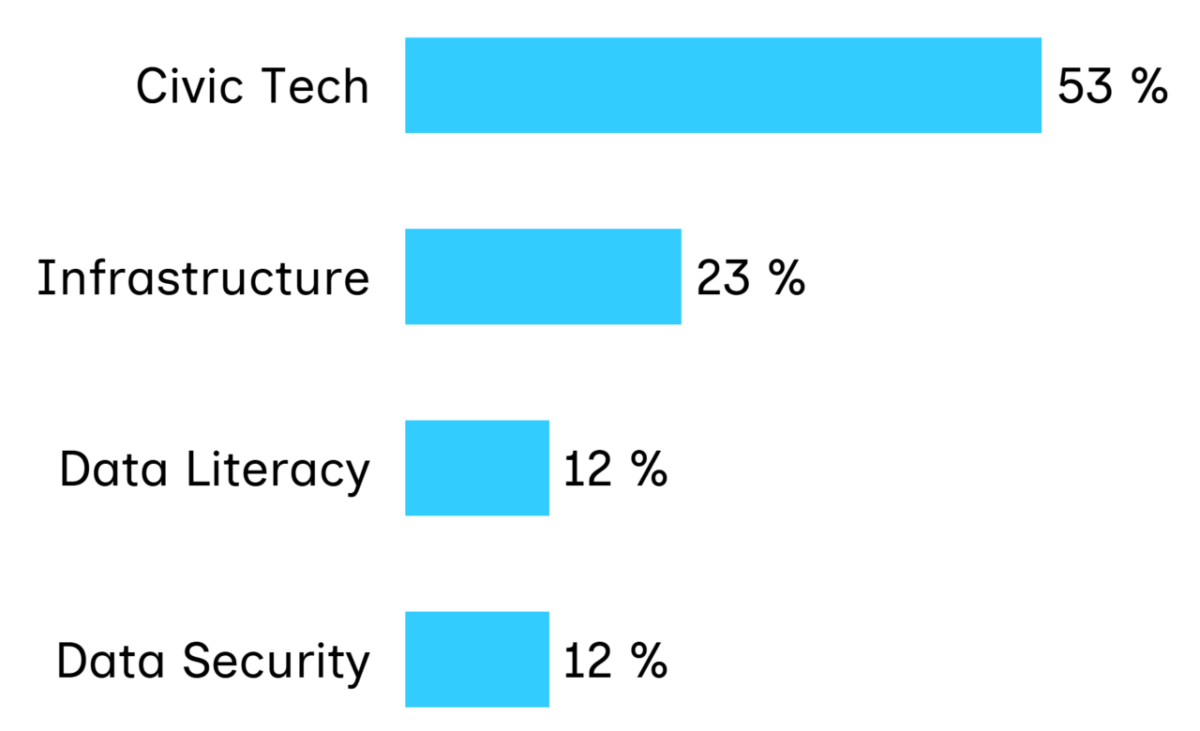
Data: Open Knowledge Foundation, based on the self-assignment of the grant recipients from rounds 1-16 at the time of application, N=339.
What happens after funding?
01
How do the projects develop after funding?
Reveal
Hide
Of the projects from rounds 1-14 whose code was published on GitHub, 36% have undergone active further development through new commits in the past six months (as of 02/2025). A significant proportion of the projects therefore remain in the same place in the long term. In contrast, at least half of the projects are not continuously developed further in their project repositories. There can be various reasons for this. It is possible, for example, that a project was designed from the outset to be completed within the funding period or that a project proved to be impossible or impractical to realise. Another possibilities is that no follow-up funding has been found and that previous grantees are not available for voluntary development work. In some cases, project results are also used elsewhere in follow-up projects with separate repositories.
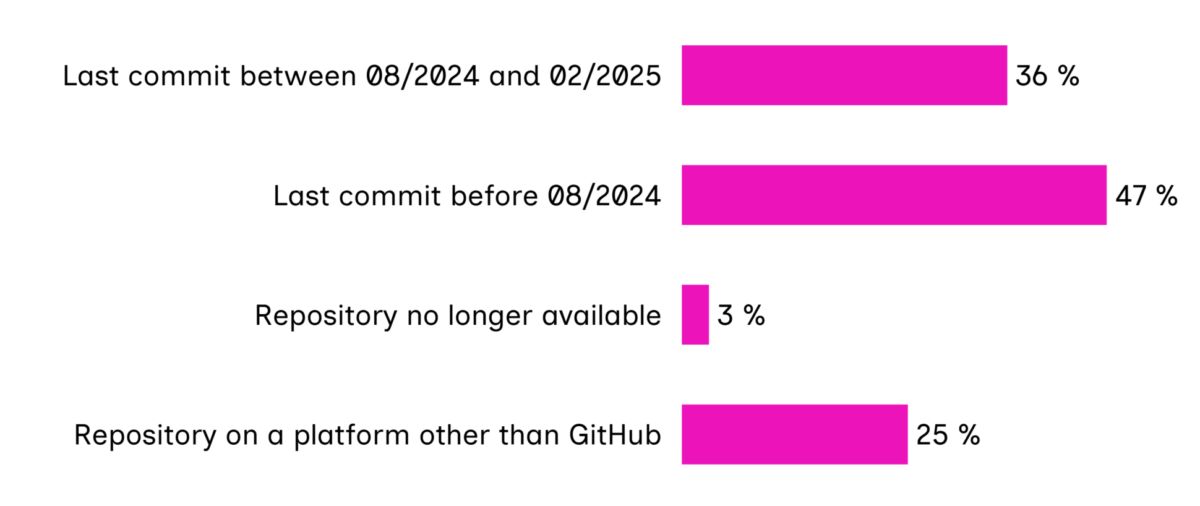
Data: Open Knowledge Foundation, based on an analysis of project repositories on GitHub for rounds 1-14 using the Octosuite analysis software, N=305.
02
How is the development of the projects financed after funding?
Reveal
Hide
At the time of a survey in summer 2023, many projects had not received any follow-up funding. One reason is that there is a funding gap in the FOSS sector for further developing ‘early stage’ applications such as those developed at the Prototype Fund. However, not all grantees are seeking follow-up funding and continue working on their projects on a voluntary basis instead. Among projects that are able to acquire follow-up funding, foundations, NGOs and public funders are the most common sources.
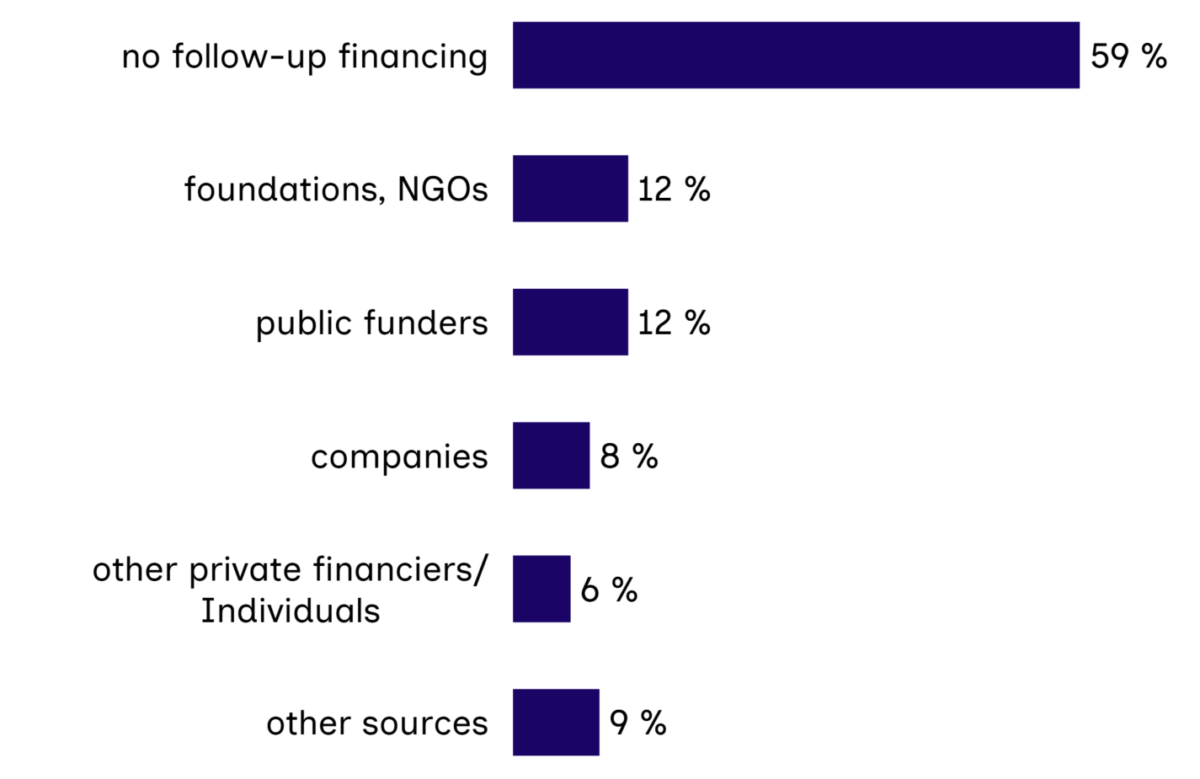
Data: Technopolis Group, based on an online survey among grantees of rounds 1-12 and WirVsVirus, n=119, multiple responses possible (see Technopolis Evaluation Report 2023, p. 22).
These are examples of development paths that can be observed among the projects which are being developed in the long term:
- Community projects, i.e. projects that are supported by a predominantly volunteer developer community and have built up their own community (e.g. drip and StreetComplete) or have been integrated into an existing community project (e.g. Generalisation of OpenStreetMap-Daten with osm2pgsql)
- Projects that are financed by a grant (e.g. FrameTrail)
- Projects financed by donations (e.g. Mastodon: Mobile Apps and E2E Encryption)
- Projects with a commercial business model such as software as a service (e.g. pretix), customised further development (e.g. FixMyBerlin) or licensing of data (e.g. OpenSanctions)
How has the Prototype Fund evolved over time?
01
Development between 2016 and 2024
Reveal
Hide
As a learning funding programme, the Prototype Fund was continuously developed during its first term. Important changes were:
- 2017: After the second round, the maximum funding amount was increased from €30,000 to €47,500 and the required own contribution was reduced accordingly from 40% to 5%.
- 2020: From the eighth round onwards, all funding rounds were open to all topics. Previously, key topics were specified for each round, on the basis of which projects were selected for funding.
- 2022: A wiki for information on the funding process and a knowledge base for information on project development were set up to facilitate a better exchange of knowledge between funding recipients.
02
Development from 2024
Reveal
Hide
At the end of 2024, the Prototype Fund was redesigned in a new funding guideline. The most important changes include focussing on the funding priorities of data security and software infrastructure, increasing the maximum funding amount and the option of adding a four-month second-stage grant to the six-month basic grant.